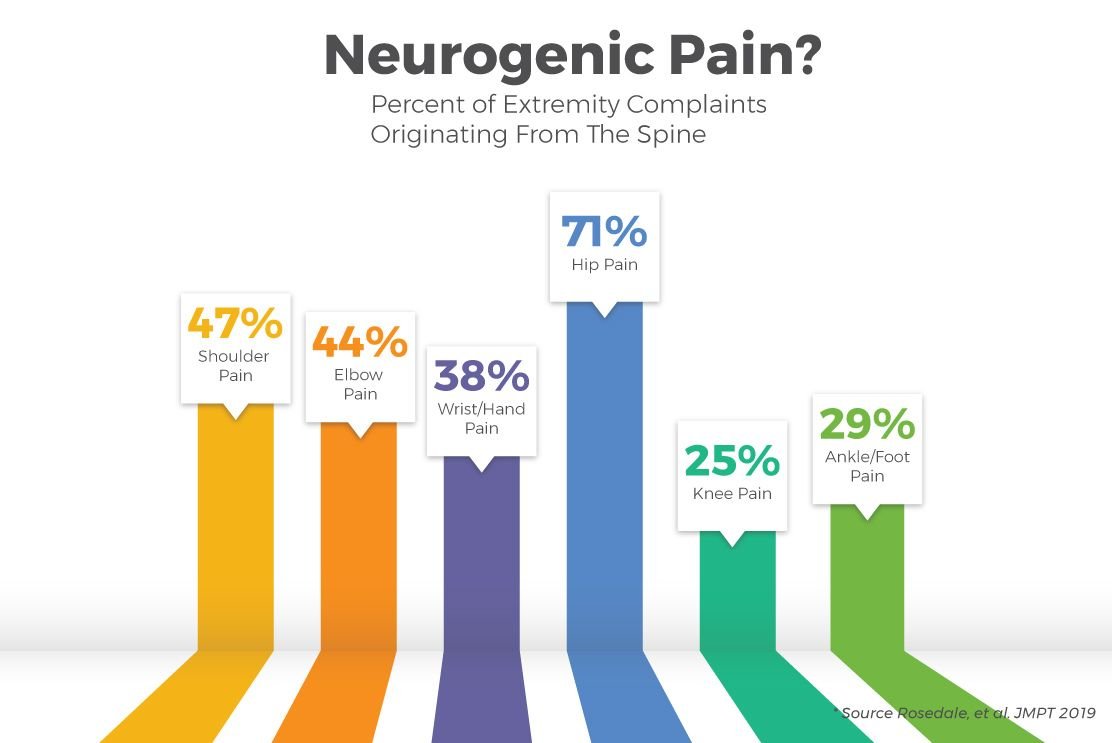(Video) Nerve Mobilization Technique for Rotator Cuff Impingement
A December 2020 BMC Musculoskeletal Disorders randomized control clinical trial of 80 shoulder impingement patients evaluated the effectiveness of adding nerve mobilization to standard therapy. (1) The study found that patients receiving nerve mobilization had a nearly two-point greater VAS improvement (lower mean pain score 2.15 vs. 4.90).
Here’s our two-minute synopsis of this nerve mobilization technique for shoulder impingement syndrome patients.
This BMC study applied nerve mobilization techniques as described by Butler. (2) The protocol started with nerve sliding/flossing and progressed to nerve tensioning. Each technique was held for five seconds and repeated ten times.
Upper Extremity Nerve Glide
Begin sitting or standing, looking straight ahead. Tip your head toward the affected side to move your ear toward your shoulder. Move your straightened arm 90 degrees directly out to the side, palm up. Simultaneously flex your affected elbow while you tilt your head toward the unaffected side. Reverse movements to return your head and elbow to their earlier positions. Your head and hand should move back and forth in the same directions throughout this exercise. Repeat in a slow rhythmic pattern for ten repetitions, or as directed. Discontinue this exercise if you experience any significant increase in discomfort radiating into your arm.
Upper Extremity Nerve Tension
Begin sitting or standing, looking straight ahead. Move your straightened arm 90 degrees directly out to the side, palm up. Tip your head toward the opposite/ unaffected side, moving your ear toward your shoulder to increase tension. Release tension by simultaneously flexing your affected elbow while tilting your head toward the affected side until your fingers and ear are touching. Return your head and elbow to their earlier positions of tension. Repeat in a slow rhythmic pattern for ten repetitions, or as directed. Your head and hand should move back and forth in opposite directions throughout this exercise. It is acceptable to touch discomfort, but discontinue this exercise if you experience any significant increase in discomfort radiating into your arm.
Evidence-based providers should not be surprised that nerve mobilization relieves a peripheral “mechanical” condition like impingement syndrome. A 2019 JMPT study concluded that, on average, 43.5% of extremity pain originates from the (asymptomatic) spine. (3)
Additionally, an August 2020 JMPT study concluded: “the presence of cervical-spine pain is a high predictor of shoulder pain of capsular-lesion origin.” (4)
These studies deliver a reminder to consider the neurodynamic component of every extremity problem. Employing simple nerve mobilization techniques for “mechanical” conditions that harbor a neuropathic component will improve clinical outcomes and patient satisfaction.
And speaking of improved clinical outcomes and patient satisfaction... ChiroUp subscribers can streamline these processes for over 100+ conditions. We’re going into the new year with more protocols, more research, and enhanced site functionality that has been heavily requested by our subscribers. ChiroUp has big plans for 2021, and we are grateful to have this community on board!
Looking to take your practice from good to exceptional? That starts NOW!
Visit ChiroUp.com to learn about our platform that exists to improve clinical outcomes, simplify patient education, and market your exceptional outcomes to your community. It’s everything you need in one easy-to-use system.
-
Akhtar M, Karimi H, Gilani SA, Ahmad A, Raza A. The effectiveness of routine physiotherapy with and without neuromobilization on pain and functional disability in patients with shoulder impingement syndrome; a randomized control clinical trial. BMC Musculoskeletal Disorders. 2020 Dec;21(1):1-9. Link
Butler D, Gifford L. The concept of adverse mechanical tension in the nervous system part 1: testing for “dural tension”. Physiotherapy. 1989 Nov 10;75(11):622-9. Link
Rosedale R, Rastogi R, Kidd J, Lynch G, Supp G, Robbins SM. A study exploring the prevalence of Extremity Pain of Spinal Source (EXPOSS). Journal of Manual & Manipulative Therapy. 2019 Sep 4:1-9. Link
de Cássia Libardoni T, Armijo-Olivo S, Bevilaqua-Grossi D, de Oliveira AS. Relationship Between Intensity of Neck Pain and Disability and Shoulder Pain and Disability in Individuals With Subacromial Impingement Symptoms: A Cross-Sectional Study. Journal of Manipulative and Physiological Therapeutics. 2020 Aug 26. Link



